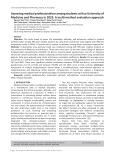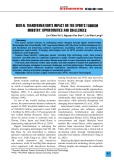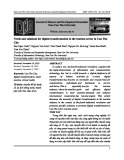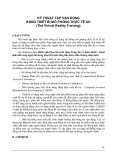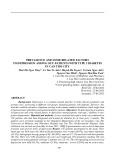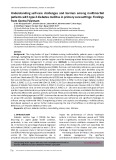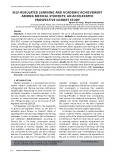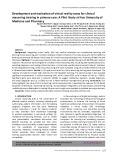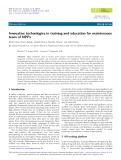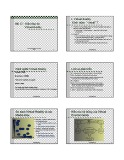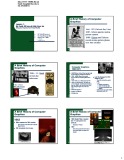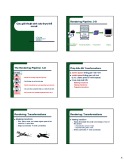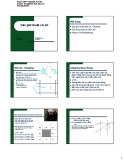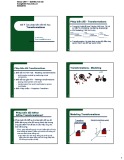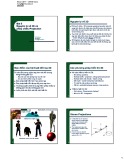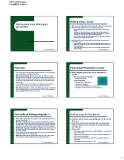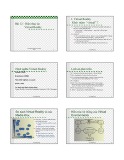
HUE JOURNAL OF MEDICINE AND PHARMACY ISSN 3030-4318; eISSN: 3030-4326 121
Hue Journal of Medicine and Pharmacy, Volume 14, No.4/2024
Development and evaluation of virtual reality cases for clinical
reasoning training in primary care: A Pilot Study at Hue University of
Medicine and Pharmacy
Nguyen Minh Tam1*, Nguyen Vu Quoc Bao2, Le Ho Thi Quynh Anh1, Ho Dac Truong An1,
Nguyen Hoang Bach3, Duong Quang Tuan1, Che Thi Len Len1, Nguyen Duc Hoang4,
Le Van Chi5, Martin Valcke6, Huynh Van Minh5, Nguyen Vu Quoc Huy7
(1) Family Medicine Center, Hue University of Medicine and Pharmacy, Hue University
(2) Medical student, Hue University of Medicine and Pharmacy, Hue University
(3) Center for Information Technology, Hue University of Medicine and Pharmacy, Hue University
(4) Institute of Information and Communication Technology, Hanoi
(5) Department of Internal Medicine, Hue University of Medicine and Pharmacy, Hue University
(6) Faculty of Psychology and Educational Sciences, Ghent University, Belgium
(7) Department of Obstetrics and Gynecology, Hue University of Medicine and Pharmacy, Hue University
Abstract
Background: Integrating virtual reality (VR) into medical education can revolutionize teaching and
learning clinical reasoning, yet it remains relatively limited in Vietnam. This study represents the first effort to
develop and evaluate VR-based clinical cases for clinical reasoning training at Hue University of Medicine and
Pharmacy. Methods: This quasi-experimental study uses a pretest-posttest design with 298 fifth-year medical
students. VR scenarios were designed to simulate clinical reasoning skills, including ordering laboratory tests,
providing diagnoses, and making clinical decisions. A structured questionnaire assessed students’ readiness
for VR-integrated learning, while clinical reasoning skills were evaluated using a four-station OSCE format and
a VR-based examination. Results: A VR system and cases for clinical reasoning training were developed. The
majority of students showed high readiness for VR-integrated learning. The paired sample T-test revealed
significant improvements in clinical reasoning skills, with a mean OSCE score increase of 4.85 (p < 0.001).
Significant gains were observed in students’ abilities to suggest medication regimens, provide diagnoses,
and order diagnostic tests (p < 0.001) but not in health behavior management planning. Conclusions: Our
study highlights the value of VR in enhancing clinical reasoning skills, supporting the evidence for VR-based
education in healthcare. Improving VR training, incorporating an integrated curriculum design, and fostering
multidisciplinary collaboration in creating VR cases are strongly recommended to optimize learning outcomes.
Keywords: virtual reality; medical education; clinical reasoning education; primary care.
Corresponding author: Nguyen Minh Tam; Email: dr.nmtam@huemed-univ.edu.vn
Received: 12/4/2024; Accepted: 18/6/2024; Published: 25/6/2024
DOI: 10.34071/jmp.2024.4.15
1. INTRODUCTION
Clinical reasoning (CR) is the cornerstone of
effective medical practice, involving collecting and
synthesizing patient information and formulating
prognosis, diagnosis, and care plans. Mastering
clinical reasoning is crucial for medical students
as they transition from theoretical knowledge
to practical application in real-world settings [1].
Traditional CR teaching methods, such as clinical
case presentations, case-based discussions, and
bedside teaching, are valuable but have some
limitations due to variability in patient presentations
and the availability of experienced clinical
instructors. Moreover, increasing medical students
further promotes these challenges as clinical
training opportunities become more limited and
competitive.
In the evolving era of digital technology, medical
education has increasingly embraced technological
advancements to enhance the training of future
healthcare professionals. One prominent innovation
nowadays is virtual reality (VR) technology,
which fosters immersive and interactive learning
environments that are controlled, repeatable, and
safe, tailored to specific educational objectives. VR
engages students in interactive clinical scenarios on
computers for learning and evaluating purposes,
providing a realistic learning environment that can
be adjusted in difficulty levels [2]. Many medical
universities employ VR systems to train students in
communication skills, medical history taking, and
clinical reasoning, ensuring they are well-prepared
for real patient interactions [3-5]. Previous studies
have demonstrated that virtual patients and virtual






